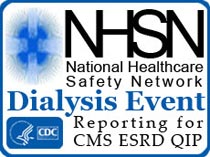The Role of Kidneys in Blood Pressure Regulation
Importance of the kidneys in blood pressure regulation
The kidneys play a crucial role in maintaining blood pressure within normal limits. They help regulate blood pressure through various mechanisms, including controlling blood volume and the balance of sodium, potassium, and water in the body.
One of the main ways the kidneys regulate blood pressure is by adjusting the amount of fluid excreted. By increasing or decreasing the amount of fluid excreted in urine, the kidneys can directly influence blood volume and consequently blood pressure. When blood pressure is high, the kidneys excrete excess fluid, reducing blood volume and pressure. Conversely, when blood pressure is low, the kidneys conserve fluid, leading to increased blood volume and subsequent elevation in blood pressure.
In addition to regulating blood volume, the kidneys also produce an enzyme called renin. Renin triggers a cascade of events known as the renin-angiotensin-aldosterone system (RAAS) to regulate blood pressure. When blood pressure decreases or there is a decrease in blood volume, the kidneys release renin into the bloodstream.
Renin converts angiotensinogen, which is produced by the liver, into angiotensin I. Angiotensin I is then converted to angiotensin II by the enzyme ACE (angiotensin-converting enzyme), primarily found in the lungs. Angiotensin II is a potent vasoconstrictor that stimulates the release of aldosterone from the adrenal glands.
Aldosterone acts on the kidneys, promoting sodium and water retention, thereby increasing blood volume and raising blood pressure. This mechanism helps the kidneys maintain blood pressure within normal limits.
In summary, the kidneys have a vital role in blood pressure regulation. Through their control of blood volume, the production of renin, and the management of sodium and water balance, the kidneys play a crucial role in maintaining stable blood pressure levels.
Renin-Angiotensin-Aldosterone System (RAAS)
The Key Hormonal Pathway of Blood Pressure Regulation
The Renin-Angiotensin-Aldosterone System (RAAS) is a crucial hormonal pathway involved in the regulation of blood pressure. It plays a significant role in maintaining the balance of fluids, electrolytes, and blood volume within the body.
When there is a decrease in blood pressure or blood volume, the kidneys release an enzyme called renin into the bloodstream. Renin converts angiotensinogen, which is produced by the liver, into angiotensin I.
Angiotensin I is subsequently converted into angiotensin II by the angiotensin-converting enzyme (ACE), mainly found in the lungs. Angiotensin II is a potent vasoconstrictor, meaning it causes the blood vessels to constrict, leading to an increase in blood pressure.
In addition to its vasoconstrictor effects, angiotensin II stimulates the release of a hormone called aldosterone from the adrenal glands. Aldosterone acts on the kidneys, promoting the retention of sodium and water. This results in an increase in blood volume, which, in turn, raises blood pressure.
The RAAS is a complex cascade of events that ensures blood pressure is regulated within normal limits. It is a dynamic system that responds to changes in blood pressure or blood volume to maintain homeostasis.
It can be summarized as follows:
1. Decreased blood pressure triggers the release of renin from the kidneys.
2. Renin converts angiotensinogen to angiotensin I.
3. Angiotensin I is converted to angiotensin II by the ACE enzyme.
4. Angiotensin II causes vasoconstriction and stimulates the release of aldosterone from the adrenal glands.
5. Aldosterone acts on the kidneys to retain sodium and water, increasing blood volume.
6. Increased blood volume leads to an elevation in blood pressure, restoring it to normal levels.
In summary, the RAAS pathway is a vital mechanism for regulating blood pressure by controlling blood volume and the constriction of blood vessels. Understanding this pathway is crucial for diagnosing and managing conditions related to blood pressure abnormalities.
Regulation of Sodium and Water Balance: A Key Role of the Kidneys in Blood Pressure Control
The kidneys play a vital role in maintaining the body’s sodium and water balance, which has a significant impact on blood pressure regulation. Here’s a closer look at how the kidneys regulate sodium and water levels to ensure stable blood pressure:
Function of Nephrons
The nephrons, the functional units of the kidneys, are responsible for filtering the blood and reabsorbing or excreting sodium and water accordingly. This process is crucial in maintaining the body’s fluid balance.
Sodium and Water Excretion
When blood pressure is elevated, the kidneys excrete excess sodium and water through urine, reducing blood volume and pressure. This mechanism helps bring blood pressure back to normal levels.
Sodium and Water Conservation
Conversely, when blood pressure is low, the kidneys conserve sodium and water to increase blood volume, subsequently raising blood pressure. This is an adaptive response aimed at maintaining adequate blood flow and perfusion to vital organs.
Role of Hormones
Hormones, including aldosterone and antidiuretic hormone, also play a role in regulating sodium and water balance. Aldosterone, produced by the adrenal glands, promotes sodium and water retention by the kidneys, increasing blood volume and pressure. Antidiuretic hormone, released by the pituitary gland, enhances water reabsorption in the kidneys, further influencing blood volume and pressure.
Impact on Extracellular Fluid Volume
By adjusting the reabsorption of water and electrolytes, particularly sodium, the kidneys can regulate the extracellular fluid volume. This, in turn, has a direct impact on blood pressure regulation.
Understanding the intricate role of the kidneys in sodium and water balance is crucial for proper blood pressure management. For more detailed information on kidneys’ role in blood pressure regulation, refer to authoritative sources such as the National Kidney Foundation and the American Heart Association.
Autoregulation of Renal Blood Flow
The kidneys possess an incredible autoregulatory mechanism that ensures a consistent blood flow to maintain the blood pressure within a narrow range. This mechanism involves the constriction or dilation of the renal arterioles in response to changes in arterial pressure.
- If arterial pressure decreases, the arterioles dilate to increase blood flow to the kidneys.
- Conversely, if arterial pressure increases, the arterioles constrict to reduce blood flow.
This autoregulatory feedback mechanism is crucial for maintaining stable blood pressure despite varying systemic pressures.
| Autoregulation in Response to Arterial Pressure Changes | Arterial Pressure Decreases | Arterial Pressure Increases |
|---|---|---|
| Renal Arterioles | Dilate | Constrict |
| Blood Flow to Kidneys | Increases | Reduces |
The ability of the kidneys to regulate their own blood flow is essential for maintaining proper function and overall blood pressure homeostasis.
Key Points
- The kidneys possess an autoregulatory mechanism to maintain a consistent blood flow.
- Renal arterioles dilate when arterial pressure decreases and constrict when arterial pressure increases.
- This autoregulatory mechanism helps maintain stable blood pressure despite systemic pressure changes.
Role of the kidneys in fluid balance
Fluid balance is crucial for blood pressure regulation, and the kidneys play a central role in this process.
The kidneys filter approximately 180 liters of plasma each day, and most of the filtered fluid is reabsorbed back into the bloodstream.
The intricate network of tubules in the kidneys selectively reabsorbs water and nutrients while excreting waste products as urine.
By adjusting the reabsorption of water and electrolytes, particularly sodium, the kidneys can regulate extracellular fluid volume and blood pressure.
| Key Points | Details |
|---|---|
| Kidney filtration | The kidneys filter approximately 180 liters of plasma per day. |
| Fluid reabsorption | Most of the filtered fluid is reabsorbed back into the bloodstream. |
| Tubular function | The tubules selectively reabsorb water and nutrients while excreting waste products as urine. |
| Electrolyte regulation | The kidneys adjust the reabsorption of water and electrolytes, especially sodium, to regulate extracellular fluid volume. |
In summary, the kidneys play a vital role in maintaining fluid balance, as they filter a large volume of plasma daily and selectively reabsorb necessary substances while excreting waste. By regulating the reabsorption of water and electrolytes, particularly sodium, the kidneys can effectively control extracellular fluid volume and contribute to blood pressure regulation.
Influence of kidneys on blood vessel constriction and dilation
The kidneys play a vital role in regulating blood vessel constriction and dilation, which directly impacts blood pressure. Understanding this influence is crucial for maintaining normal blood pressure levels.
Vasodilation through Nitric Oxide (NO)
Nitric oxide (NO) is a vasodilator produced in the kidneys. It promotes the relaxation of blood vessels, leading to a decrease in blood pressure. The production of NO by the kidneys helps maintain normal blood pressure levels.
Research has shown that NO mediates vasodilation by activating certain enzymes, specifically guanylate cyclase, which increases cyclic guanosine monophosphate (cGMP) levels. Increased cGMP levels lead to smooth muscle relaxation and subsequent vasodilation.
This vasodilatory effect of NO is crucial for maintaining normal blood pressure and preventing hypertension. Deficiencies in NO production or impaired signaling pathways can contribute to the development of high blood pressure.
Vasoconstriction through Endothelin
Endothelin, a vasoconstrictor released by the kidneys, constricts blood vessels, leading to an increase in blood pressure. The balance between NO-mediated vasodilation and endothelin-induced vasoconstriction helps maintain normal blood pressure levels.
According to studies, endothelin promotes blood vessel constriction by binding to specific endothelin receptors, primarily ET-A and ET-B receptors. This binding triggers intracellular signaling pathways that result in smooth muscle contraction and vasoconstriction.
Imbalances in endothelin production or dysregulation of its receptors can lead to excessive vasoconstriction, contributing to hypertension and other blood pressure abnormalities.
Importance of Kidney’s Role in Blood Pressure Regulation
The intricate balance between NO-mediated vasodilation and endothelin-induced vasoconstriction, both produced by the kidneys, is crucial for maintaining normal blood pressure. Disruptions to this balance, such as decreased NO production or increased endothelin release, can contribute to hypertension and other blood pressure-related conditions.
By understanding the role of the kidneys in blood vessel constriction and dilation, healthcare professionals can identify potential imbalances and intervene to maintain optimal blood pressure levels.
Diseases and Conditions Affecting Kidney Function and Blood Pressure Regulation
Various diseases and conditions can impair kidney function, leading to disruptions in blood pressure regulation. It is essential to understand these conditions to identify and address any underlying kidney-related issues that may contribute to hypertension or other blood pressure abnormalities.
Chronic kidney disease (CKD)
Chronic kidney disease is a prevalent condition that affects the kidneys’ ability to regulate blood pressure. This impairment often results in hypertension. It is a long-lasting condition that can progress over time if not properly managed.
According to the National Kidney Foundation, CKD affects approximately 37 million people in the United States alone. The condition can develop due to various factors, including high blood pressure, diabetes, and certain inherited kidney diseases.
Primary and secondary kidney diseases
In addition to chronic kidney disease, other primary and secondary kidney diseases can also impact blood pressure regulation. These conditions often involve structural and functional abnormalities in the kidneys, affecting their ability to maintain normal blood pressure levels.
Glomerulonephritis is one example of a primary kidney disease that causes inflammation of the glomeruli, the filtering units in the kidneys. This inflammation can disrupt the kidneys’ function, leading to altered blood pressure regulation.
Polycystic kidney disease (PKD) is another genetic disorder that affects the kidneys. It causes the formation of numerous fluid-filled cysts, impairing kidney function and potentially leading to high blood pressure.
Medications
Certain medications, such as nonsteroidal anti-inflammatory drugs (NSAIDs), can interfere with renal mechanisms and cause hypertension. NSAIDs are commonly used for pain relief and reducing inflammation. However, prolonged or excessive use of these medications can disrupt the kidney’s ability to regulate blood pressure effectively.
It is crucial to consult with a healthcare professional or pharmacist regarding the potential side effects of medications, including their impact on blood pressure regulation.
By understanding the relationship between kidney function and blood pressure regulation, healthcare professionals can effectively diagnose and treat hypertension and other blood pressure abnormalities. Regular monitoring of
kidney function and addressing any underlying kidney conditions can contribute to better blood pressure management and overall health.








Leave a Reply